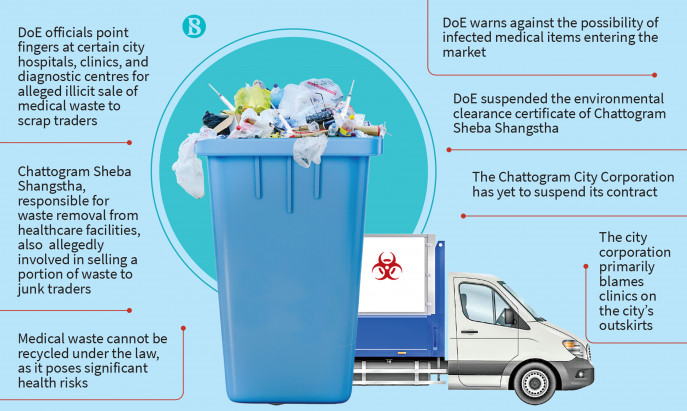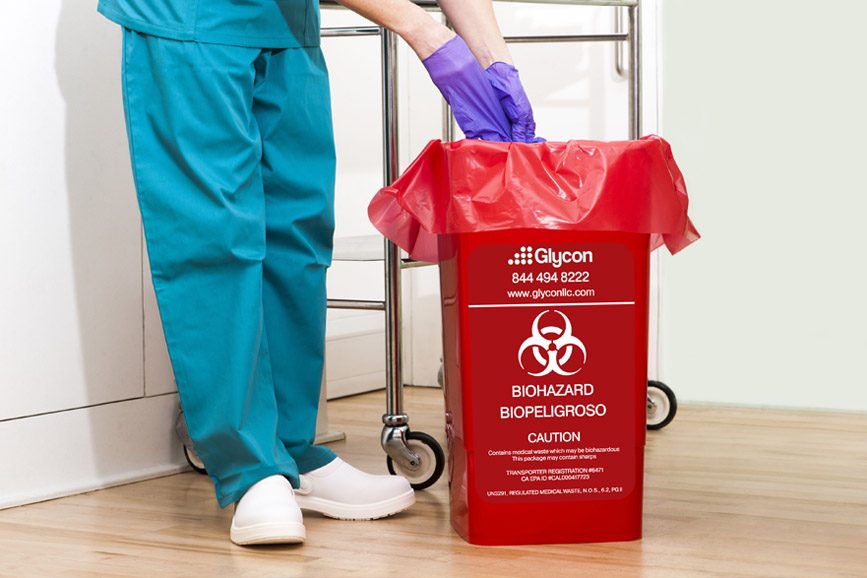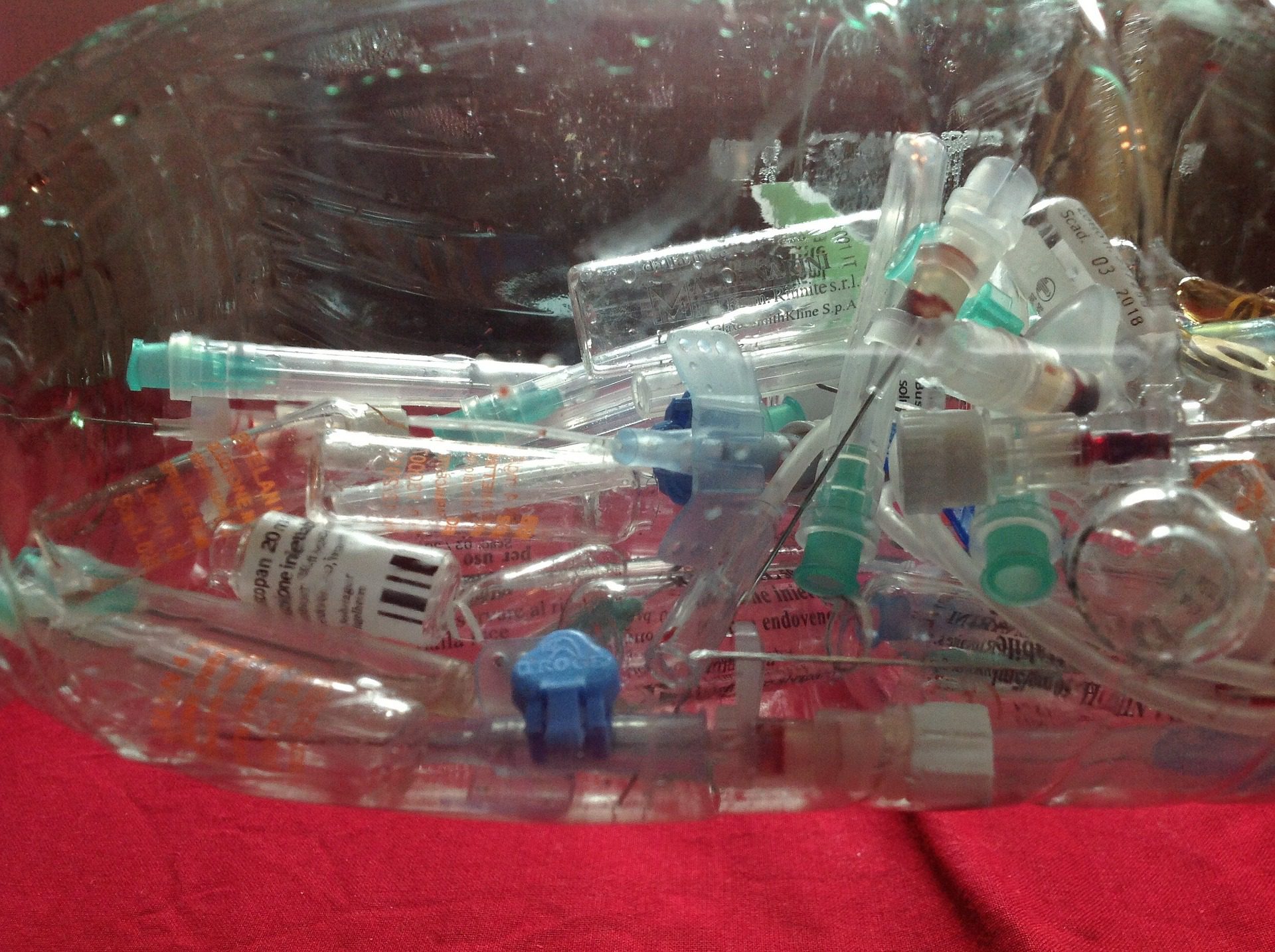Guardians of Tidiness: Local Medical Waste Removal Service for Your Peace of Mind
Guardians of Tidiness: Local Medical Waste Removal Service for Your Peace of Mind
Blog Article
Reliable and Ecologically Friendly Medical Garbage Disposal Solutions
In the ever-evolving area of medical care, the problem of clinical waste disposal remains a subject of critical value. As medical facilities, facilities, and other healthcare centers aim to offer top quality individual treatment, they have to also deal with the challenge of successfully and sensibly disposing of their waste.
Waste Partition Practices
Effective waste partition practices are important to ensure the secure and appropriate disposal of clinical waste. Medical waste, which includes materials polluted with possibly contagious materials, must be managed in a way that reduces the risk of injury to both public health and wellness and the setting. Appropriate waste segregation plays an important duty in accomplishing this objective.
Waste segregation includes the separation of various kinds of waste based upon their qualities and possible dangers. This process ensures that each kind of waste is treated and dealt with suitably (medical waste disposal services with WasteX). It starts at the factor of generation, where medical care facilities need to have assigned bins and containers for different waste classifications, such as sharps, transmittable waste, pharmaceutical waste, and non-hazardous waste
By segregating medical waste at the source, doctor can stop cross-contamination and minimize the threat of exposure to contagious agents. This technique additionally helps with the recycling and recuperation of particular materials. Setting apart and reusing clean plastics and glass decreases the need for raw materials and minimizes the ecological impact of clinical waste disposal.

Autoclaving and Sanitation Methods
In order to make sure the appropriate and risk-free disposal of medical waste complying with effective waste segregation techniques, health care centers need to employ autoclaving and sanitation strategies. Autoclaving is a widely utilized approach that utilizes high-pressure heavy steam to sanitize clinical waste.
This includes treating the waste with chemicals such as ethylene oxide or hydrogen peroxide, which kill microorganisms by disrupting their cellular structure. It is important to keep in mind that chemical sanitation needs proper handling and disposal of the chemicals utilized, as they can be hazardous to human wellness and the atmosphere if not taken care of properly.
On-Site Waste Therapy Solutions
Medical care facilities have carried out on-site waste therapy systems to address the disposal of medical waste in a efficient and risk-free way. These systems provide a economical and convenient solution for handling medical waste produced within the facility. On-site waste therapy systems make use of various technologies to get rid of and treat of medical waste on-site, reducing the demand for transport to off-site centers.
One frequently utilized on-site waste treatment system is the microwave technology. This modern technology utilizes microwave power to disinfect and decontaminate clinical waste, decreasing its quantity and providing it risk-free for disposal. One more system is the chemical sanitation technology, which includes dealing with clinical waste with chemicals to kill virus and decrease its dangerous nature. This method is especially reliable for liquid medical waste.
They get rid of the threat of medical waste being mishandled during transport, decreasing the possibility for contamination and exposure to unsafe compounds. On-site therapy systems minimize the total environmental influence of clinical waste by reducing transportation and the demand for garbage dump room.
Recycling and Repurposing Initiatives
As medical care facilities strive for lasting waste administration techniques, they are increasingly checking out recycling and repurposing campaigns as a method of reducing the environmental impact of medical waste. Reusing and repurposing efforts entail discovering ingenious my latest blog post ways to reuse or transform clinical waste into brand-new items or materials. This not just helps to decrease the volume of waste that winds up in incinerators or landfills however additionally minimizes the usage of raw products and energy needed for making new items.
One instance of recycling in the healthcare market is the reprocessing of single-use medical tools. These devices, such as medical instruments or catheters, are normally discarded after a single use. Nevertheless, improvements in innovation and rigid sanitation processes have made it possible to securely clean, disinfect, and recycle these gadgets several times. This not only decreases the amount of waste produced however additionally conserves medical care facilities significant prices related to buying new gadgets.
Another recycling campaign involves the recycling of plastic containers, such as drug containers or syringe coverings. These containers can be accumulated, arranged, and click reference sent to recycling centers where they are processed, thawed down, and changed right into new plastic products. This helps to conserve sources and reduce the demand for virgin plastic production.
Along with recycling, repurposing initiatives entail locating alternative usages for medical waste. As an example, shredded paper waste from medical records or product packaging materials can be repurposed as bedding material for animals or as insulation material (medical waste removal near me). Likewise, organic waste such as food scraps from healthcare facilities can be composted and utilized as fertilizer in yards or farming fields.

Renewable Power Solutions
One effective method to reducing the ecological influence of health care operations includes executing renewable resource solutions. Medical care facilities, such as hospitals and clinics, take in substantial quantities of power for various functions, consisting of illumination, heating, cooling, and operating medical devices. By transitioning to renewable resource resources, these facilities can considerably reduce their carbon impact and add to a much more sustainable future.

Carrying out renewable resource remedies in health care facilities not only reduces greenhouse gas emissions yet also provides long-lasting cost savings. While the initial investment in renewable resource infrastructure may be greater, the lasting operational expenses of sustainable power systems are dramatically lower contrasted to conventional fossil fuel-based energy resources. In addition, renewable resource systems are trusted and can offer a secure and uninterrupted power supply, guaranteeing constant health care services even throughout power blackouts or emergencies.
Verdict
To conclude, executing environmentally friendly and effective medical garbage disposal services is necessary for maintaining a sustainable health care system. By adopting waste partition methods, autoclaving and sterilization techniques, on-site waste treatment systems, recycling and repurposing efforts, and renewable resource remedies, healthcare centers can substantially lower their environmental influence. These steps not just protect the setting however also promote public wellness and security. For that reason, it is essential for health care organizations to prioritize the application of these sustainable waste disposal methods.
It begins at the factor of generation, where medical care facilities should have designated containers and containers for different waste groups, such as sharps, contagious waste, pharmaceutical waste, and non-hazardous waste.
In order to guarantee the risk-free and appropriate disposal of medical waste following efficient waste partition practices, medical care facilities should use autoclaving and sterilization techniques.Health care centers have implemented on-site waste therapy systems to attend to the disposal of clinical waste in a effective and risk-free manner. On-site find more information waste treatment systems use various technologies to deal with and get rid of of clinical waste on-site, minimizing the demand for transport to off-site facilities.
As healthcare facilities strive for lasting waste administration methods, they are significantly exploring recycling and repurposing campaigns as a means of decreasing the ecological influence of clinical waste. - medical waste removal near me
Report this page